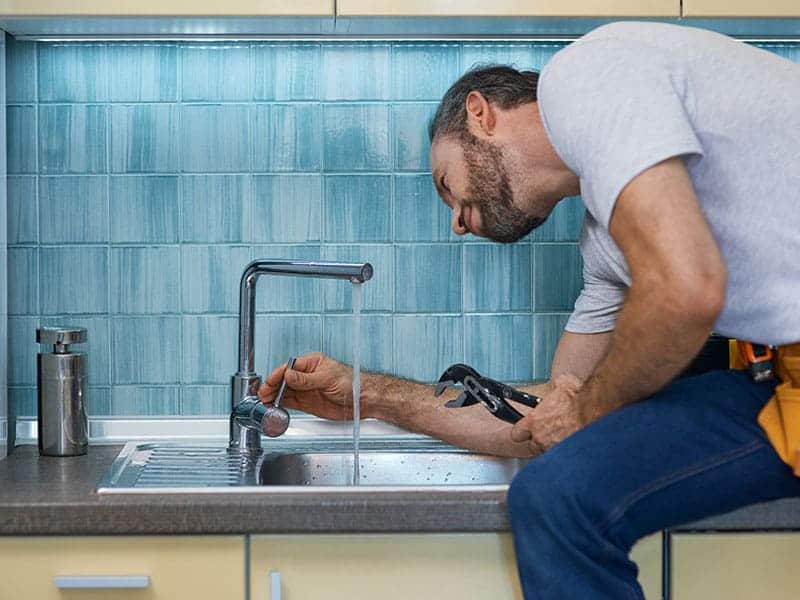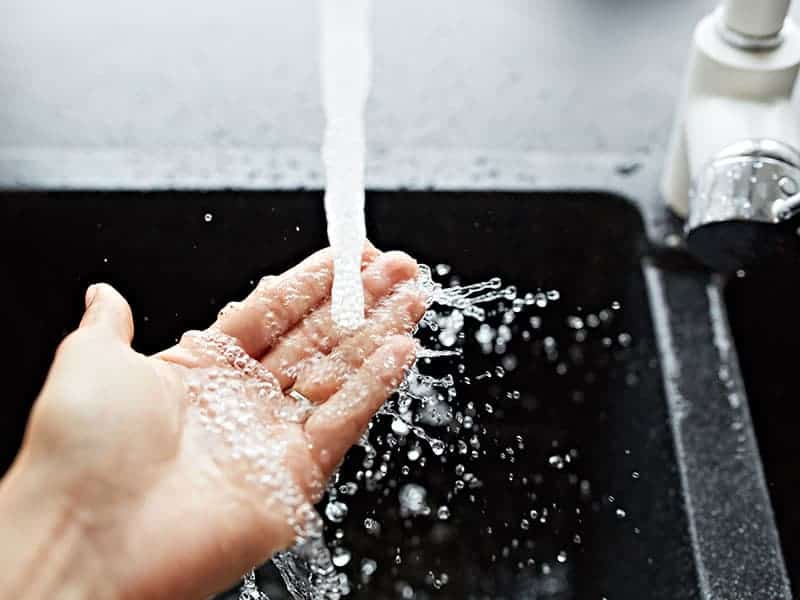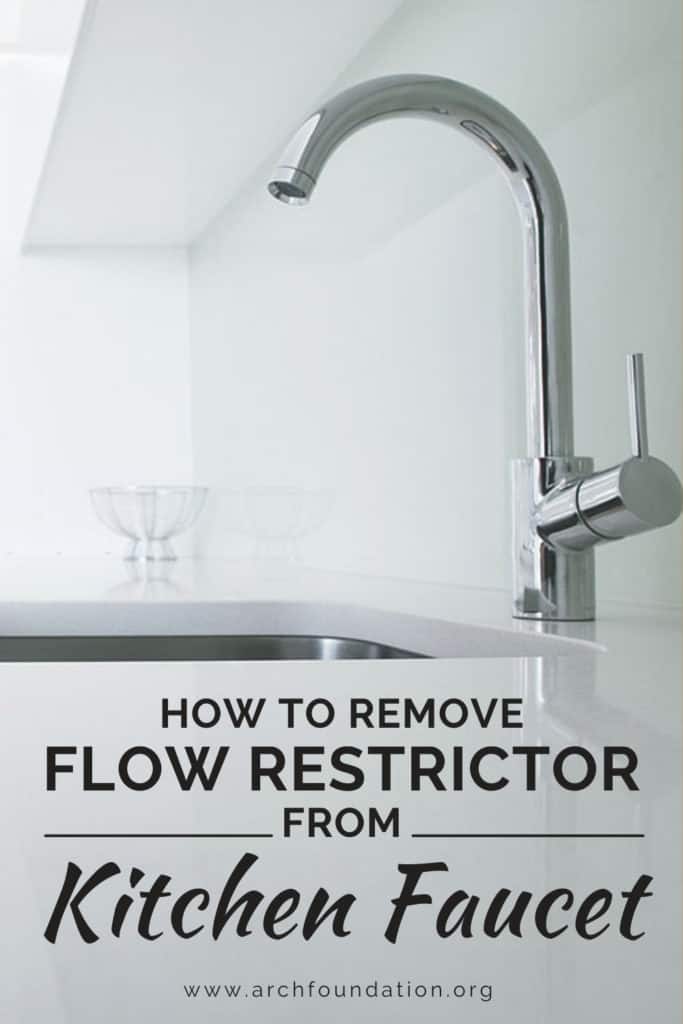How to Remove Flow Restrictor From Kitchen Faucet
If you don’t know how to remove flow restrictor from kitchen faucet, this article is for you.
A flow restrictor is fastened to faucets to control the water flow to a greater extent. It saves more water consumption. However, it’s easy to remove for cleaning or replacing purposes, so don’t worry.
If the flow is too low to finish your bathroom cleaning or kitchen washing, you might need to remove the restrictor from the faucet. Today, I will teach you how to remove your flow restrictor properly.
I will also explain the key benefits of flow restrictors and answer a few FAQs, so let’s begin.
What Is A Flow Restrictor?
A flow restrictor is a small disk-shaped barrier that lowers the water flow that comes out of the faucet. It’s easy to install in many configurations. This part can be applied as a unit that substitutes the ordinary flow-directing screen on a faucet. Or built-in as part of the faucet itself.
How To Remove Flow Restrictor From Kitchen Faucet?

Since 1994, according to state and federal law manufacturers have been adding flow restrictors to save more water consumption. Over time, debris will form in the flow restrictor.
The debris and sediments will clog the restrictor, further decreasing the water flow. Therefore, you must take off the flow restrictor to remove the debris and residue so that the water flow increases.
You can also get rid of the flow restrictor forever. I strongly advise against this. You can either clean it or replace it. Get a towel, a screwdriver, adjustable wrench, and get to work.
Step 1: Spread A Towel On Your Sink
One of the main issues while taking off the flow restrictor that homeowners face is the loss of screws. It happens as the small screws usually fall through the sinkhole. To prevent this from happening, spread a towel on your sink blocking the holes. This will keep the screws from going down the holes.
Step 2: Remove The Aerator
Once you’ve placed the towel, it’s time to take off the aerator. This is a super easy process. You can take off the aerator with your hands by turning it in the counterclockwise direction. I recommend utilizing the adjustable wrench if you feel it too tight.
Furthermore, to prevent damage, wrap it with a normal rubber band. Then, keep it with the adjustable wrench. Finally, turn the wrench counterclockwise to remove the aerator.
Step 3: Buy A Removal Tool
In case your faucet has a concealed aerator, you will need to buy special removal equipment. However, don’t stress about it. You can easily find it in the local plumber shop.
Step 4: Remove The Flow Restrictor
Once you’re done with the aerator, it’s time to take off the flow restrictor. This is another easy process. Utilize a screwdriver to twist the unit so that it loosens up from the connection. Then, utilize the wrench to pry it off from your kitchen faucet.
Now, clean the aerator and restrictor to replace. Keep in mind that removing the restrictor from models like Pfister, Moen, or Delta is very similar. Meaning, you can easily remove the restrictor despite the unit you have by following this short guide.
Warning: Be Aware of Dust Particles and Debris
Don’t forget about the things that will come through your kitchen faucet because of the absence of your flow restrictor. Things like dust particles and dust when ingested can cause various infections inside your digestive tract and even lead to gastrointestinal issues or death.
Extra Tip: Most Old-Fashioned Faucets Feature a Female Thread Fitting
This part isn’t hard to remove. Just utilize your fingers and turn the aerator in a clockwise direction. If it’s too hard to take off, wrap a fabric around it to prevent damage and utilize a plier to unscrew the aerator head. Modern faucets, on the other hand, have a male threaded fitting.
This part is also known as a cache aerator and requires much more application of force while separating it from your faucet. Just place your finger inside it and twist in a counter-clockwise direction to loosen it. Or utilize a removal key that can be easily purchased at a hardware store.
Let’s watch it:
How Do You Remove A Flow Restrictor From A Delta Kitchen Faucet?
There’s nothing more annoying than a Delta kitchen faucet with low flow. You probably know that many kitchen tasks can be accomplished faster with enough pressure and flow.
The next step-by-step guide can help you remove a flow restrictor from a Delta kitchen faucet and boost the flow of water. I highly recommend that you remove it and replace it.
Step 1: Close Every Valve
First and foremost, turn off the hot and cold water valves under your sink. If you can’t locate the valves or they won’t turn down, you can shut down your home’s main valve instead. This will turn down every water fixture. Once you’re done, turn on your faucet to release any remaining water.
Step 2: Open The Faucet Base
Search for the set screw at the faucet handle’s base. Use a wrench to loosen it counterclockwise. If you don’t have a wrench, you can easily find a Delta repair kit that contains every necessary tool needed for replacements and repairs. If there’s a cap over the screw, remove it with a screwdriver.
Step 3: Follow Safety Precautions
Every sink has many small parts that can easily get lost. Therefore, place a rag or towel into your sink to keep any small pieces from getting into it. Next, remove the aerator. It’s a tiny unit on the faucet spout’s end. Protect it with a painter’s tape before you start with the flow restrictor removal.
Step 4: Remove The Flow Restrictor
First, catch the aerator utilizing slip joint pliers and unfasten it counterclockwise. You can also unfasten it manually. However, it can be challenging for tighter and smaller restrictors. Once you’ve unfastened it enough, keep spinning it manually until it gets to the end of your faucet.
Then, take off the aerator’s rubber washer. It’s a tiny elastic fitting inside the aerator. Lastly, you can pull the restrictor out of the aerator and unclog it by following the next steps.
Step 5: Unclog Your Flow Restrictor
Usually, the flow restrictor isn’t the cause of your low water flow. The repair is often simple and doesn’t need you to take off the part altogether. Over time, flow restrictors get clogged, especially when they’re poorly maintained. The debris piles up and decreases the water pressure of your faucet.
Step 6: Check The Restrictor For Debris
Remove the aerator as instructed above. Then, check for any dirt and debris in your flow restrictor. If it’s clean, perhaps your water lines cause the issue. Otherwise, proceed with the next step.
Step 7: Flush The Debris
With the aerator taken off, run both cold and hot water for at least 15 seconds to clean your faucet and water lines. Keep in mind that with the aerator removed, a faster pressure of water can cause splashing if you don’t turn it on carefully. Impure water and larger debris will need multiple flushes.
Step 8: Remove Larger Debris
Sometimes, larger debris inside your water lines can’t pass through your kitchen faucet. If this occurs to you, you need to take off every internal component (turn off the water supply before doing this). Then, clean the parts thoroughly. Turn the water back on and keep it going until you get clean water.
Step 9: Replace The Flow Restrictor
Once your flow restrictor is cleaned (you can use diluted vinegar for better results), place it back into the aerator. Then, put the component back into place and screw it in a clockwise direction.
After doing all of this, turn the water back on and you’re done. If the pressure improves and the water is clean, you’ve done the job nicely. If it’s still weak, you might need to buy a new restrictor.
Let’s watch it:
5 Benefits Of Flow Restrictors

Do you need a flow restrictor? The short answer is yes. This small unit lowers more water consumption. The long answer is that a flow restrictor comes with a lot of benefits such as the following.
1. Saves Water
A normal tap without aerators releases 5-6 gallons per minute. A tap with a single flow restrictor utilizes only half of that amount, so it saves water which is good for both your bill and the environment.
2. Saves Energy
A flow restrictor doesn’t just save water. It also saves energy indirectly. Meaning, it can save more if you use heated water regularly. The best part? Saving energy means saving money in your pocket.
3. Enhances Pressure
With a flow restrictor in place, your faucet’s water pressure becomes better without releasing too much water. So, why wouldn’t you want to have a flow restrictor installed into your kitchen faucet?
4. Acts As A Filter
Flow restrictors along with aerators not only save more water consumption but also act as filters. These parts will filter out smaller debris present in your water, providing cleaner and better water.
Last but not least, restrictors prevent splash. Water splashing won’t be a problem with these products in place. I don’t know about you but I don’t enjoy being splashed with cold water in the morning.
FAQs
Let’s Get To Work
Hopefully, this guide can help you learn how to remove flow restrictor from kitchen faucet with ease the next time you notice a decrease in your water pressure.
Again, I highly advise against removing the flow restrictor forever. It’s a great unit that saves both water and energy. But here’s the kicker. It also acts as a filter, so you get clean water.
The downside of flow restrictors is that they usually get clogged. However, since they’re easy to remove and clean, you don’t need to worry about it. If you live in a rural area where water is rich in minerals, it’s a good idea to remove the flow restrictor multiple times per year and clean it properly.
This guide can save you a lot of money with little effort. And you will learn a new skill. The same removal process and cleaning apply to bathroom faucets or any other faucet on your property.
Have you ever removed the flow restrictor by yourself? If so, do you have any advice that you would like to share? Drop a comment below and help someone in need.

